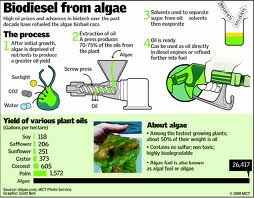Q=MCΔT
Q= Heat in Joules
M= Mass in grams
C= Specific Heat
ΔT= Change in Temperature
EXAMPLE:
Calculate the amount of energy in joules required to heat 454 grams of water from 5.4 degrees C to 98.6 degrees C. Calculate the amount of energy in calories, too.
Q=?
M=454 g
Tinitial=5.4 degrees C
Tfinal=98.6 degrees C
c= 4.184 J/gdegC
Q=454x4.184x(98.6-5.4)
Q=1.77x10^5 Joules or 177 KJ
https://www.youtube.com/watch?v=4RkDJDDnIss
http://www.wikihow.com/Calculate-Specific-Heat
http://chemistry.about.com/od/workedchemistryproblems/a/Specific-Heat-Example-Problem.htm
Tuesday, May 10, 2016
Intra/Inter Molecular Forces
I made this diagram to help with intramolecular and intermolecular forces... hope it's helpful...
http://chemed.chem.purdue.edu/genchem/topicreview/bp/intermol/intermol.html
Biodiesel Research...
Compilation of Biodiesel Research...
http://www.biodiesel.com/biodiesel/what-is-biodiesel/
http://www.fueleconomy.gov/feg/biodiesel.shtml
Click here for my favorite study music
- renewable
- clean-energy
- Blends of B20 can be used in a diesel engine without need for modifications
- IS registered with the Environmental Protection Agency in the United States
- Can be blended with petroleum or used purely
- Statistically safer than petroleum diesel
- made with natural vegetable oils and fats
http://www.biodiesel.com/biodiesel/what-is-biodiesel/
http://www.fueleconomy.gov/feg/biodiesel.shtml
Click here for my favorite study music
Monday, May 9, 2016
Making Biodiesel
WE MADE OUR OWN BIODIESEL
In class, we used Chickfila frier oil to create renewable biodiesel!
How to make biodiesel with used cooking oil
Everyone should make their own biodiesel.
http://biodiesel.org/
In class, we used Chickfila frier oil to create renewable biodiesel!
How to make biodiesel with used cooking oil
Everyone should make their own biodiesel.
http://biodiesel.org/
BIODIESEL
Biodiesel Video!!
Biodiesel is a cleaner fuel, and better for the environment. Our class made biodiesel videos to help spread the word about the renewable resource. Check out our videos!
OUR biodiesel video
another informative video...
This one just made us laugh :)
Biodiesel is a cleaner fuel, and better for the environment. Our class made biodiesel videos to help spread the word about the renewable resource. Check out our videos!
OUR biodiesel video
another informative video...
This one just made us laugh :)
Covalent Bonds
Result of sharing of electrons by two nonmetal atoms
BOTH atoms fill their octet (H exception)
Octet is satisfied when the two atoms are combined
http://quatr.us/chemistry/atoms/covalent.htm
http://chemwiki.ucdavis.edu/Core/Theoretical_Chemistry/Chemical_Bonding/General_Principles_of_Chemical_Bonding/Covalent_Bonds
Covalent Bonding Video
BOTH atoms fill their octet (H exception)
Octet is satisfied when the two atoms are combined
http://quatr.us/chemistry/atoms/covalent.htm
http://chemwiki.ucdavis.edu/Core/Theoretical_Chemistry/Chemical_Bonding/General_Principles_of_Chemical_Bonding/Covalent_Bonds
Covalent Bonding Video
Bonding
Electron Dot Formulas
-includes bonded and unbonded electron pairs
1) Calculate the total number of valence electrons by adding all of the valence electrons for each atom in the molecule
2) Divide the total valence electrons by 2 to find the number of electron pairs in the molecule
3) Surround the central atom with 4 electron pairs
Use the remaining electron pairs to complete the octet around the other atoms. H is the only exception, which only needs 2 electrons
4) Electron pairs that are shared by atoms are called bonding electrons
Others used to complete octets are lone pairs
5) If there are not enough electron pairs to provide each atom with an octet, move a nonbonding electron pair between two atoms that already share an electron pair
-includes bonded and unbonded electron pairs
1) Calculate the total number of valence electrons by adding all of the valence electrons for each atom in the molecule
2) Divide the total valence electrons by 2 to find the number of electron pairs in the molecule
3) Surround the central atom with 4 electron pairs
Use the remaining electron pairs to complete the octet around the other atoms. H is the only exception, which only needs 2 electrons
4) Electron pairs that are shared by atoms are called bonding electrons
Others used to complete octets are lone pairs
5) If there are not enough electron pairs to provide each atom with an octet, move a nonbonding electron pair between two atoms that already share an electron pair
Subscribe to:
Posts (Atom)













